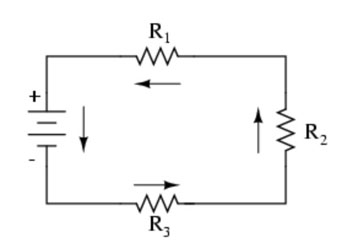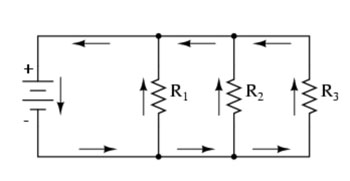What is an electric circuit- Series and Parallel Circuits
What is an electric circuit?
In order for electrons to flow they need a closed circuit. An electric circuit provides a complete, closed path for electricity. The parts of a circuit consist of a load or resistance; wires; and a switch. The source of energy can be a battery, thermocouple, photocell or an electric generator. The load is the part of the circuit that uses the power. The load of the circuit always offers some resistance to the flow of electrons. As a result energy is convert into heat, light or mechanical energy. The switch is an electric circuit is used to prevent the flow of electrons. This is called an open circuit
There are two types of electric circuits, the series and parallel circuit.
Series Circuit
A series circuit there is only one path for the electrons to flow (see image of series circuit). The main disadvantage of a series circuit is that if there is a break in the circuit the entire circuit is open and no current will flow. An example of a series would the the lights on many inexpensive Christmas trees. If one light goes out all of them will.

Parallel Circuit
In a parallel circuit the different parts of the electric circuit are on several different branches. There are several different paths that electrons can flow. If there is a break in one branch of the circuit electrons can still flow in other branches (see image of parallel circuit). Your home is wired in a parallel circuit so if one light bulb goes out the other will stay on.

Electric Circuits in your Home
In your home you will notice that most outlets have 3 prongs. Connected to the outlet are three wires. Two of the wires run parallel to each other and have a potential difference of 120 volts in the US, in Europe the potential difference is 220 volts. The third wire is connected to the ground. A wire that is connected to the ground provides the shortest path of electrons to Earth.This third wire carries no current. The wire is simply a safety feature against short circuits. A short circuit is when an accident occurs that lets electricity take a shorter path within the circuit. These circuits have less resistance and therefore more current flow. If the high potential wire should touch the other metal surface of an appliance the entire appliance will draw current and give the person touching it a shock. The ground wire having a shorter circuit provides a safety feature, so instead of current flowing through the appliance it will flow to the ground.
Circuit Safety Features - Fuses and Circuit Breakers
Your home only allows so much electricity usage at a time. Depending on the wiring some homes may allow as much as 150 amps to enter the whole home at one time, This is divided among many circuits. The average circuit in a home is 15 or 20 amps. More current flowing through the wire will cause them to heat and could start a fire. It is therefore necessary to have devices that will stop the flow of electron when the current gets to high. A fuse is a common device in many homes. Inside the fuse is a tiny strip of metal. When the current flowing through it is too high it will cause the thin strip to melt and this will cause the circuit to break.
Fuses have the disadvantage that once the fuse is burnt out they must be replaced. A better solution is to use what is called a circuit breaker. A circuit breaker has a switch which opens when the current is too high. This prevents any flow of current. The switch can manually be closed after the amount of current being used is decreased. An example is when you turn on too many electron devices in your home that exceed 15 amps the circuit breaker turns off
Test your Understanding:
Electricity, Magnetism and Electromagnetism
- Electricity and Magnetism Home
- Electric Charge
- Coulombs Law and Inverse Square Law
- Static Electricity
- The Flow of Electricity
- Electric Current
- Electric Circuits
- Electric Power
- The Nature of Magnets
- Earth as a Magnet
- Magnetism in Action
- Magnetism from Electricity
- Electricity from Magnetism
- How do Transformers Work?
- Ohms Law Lab
- Magnetic Forces Lab
- Why Metals Conduct Electricity
- How does a Battery Work
- How does an Electric Motor Work
Science of Fluids
- Science of Fluids
- What are Fluids?
- What is Pressure?
- What is Hydrostatic Pressure?
- Surface Tension and Capillary Action
- Pascals Principle
- Archimedes Principle
- What is Viscosity?
- Bernouili's Principle